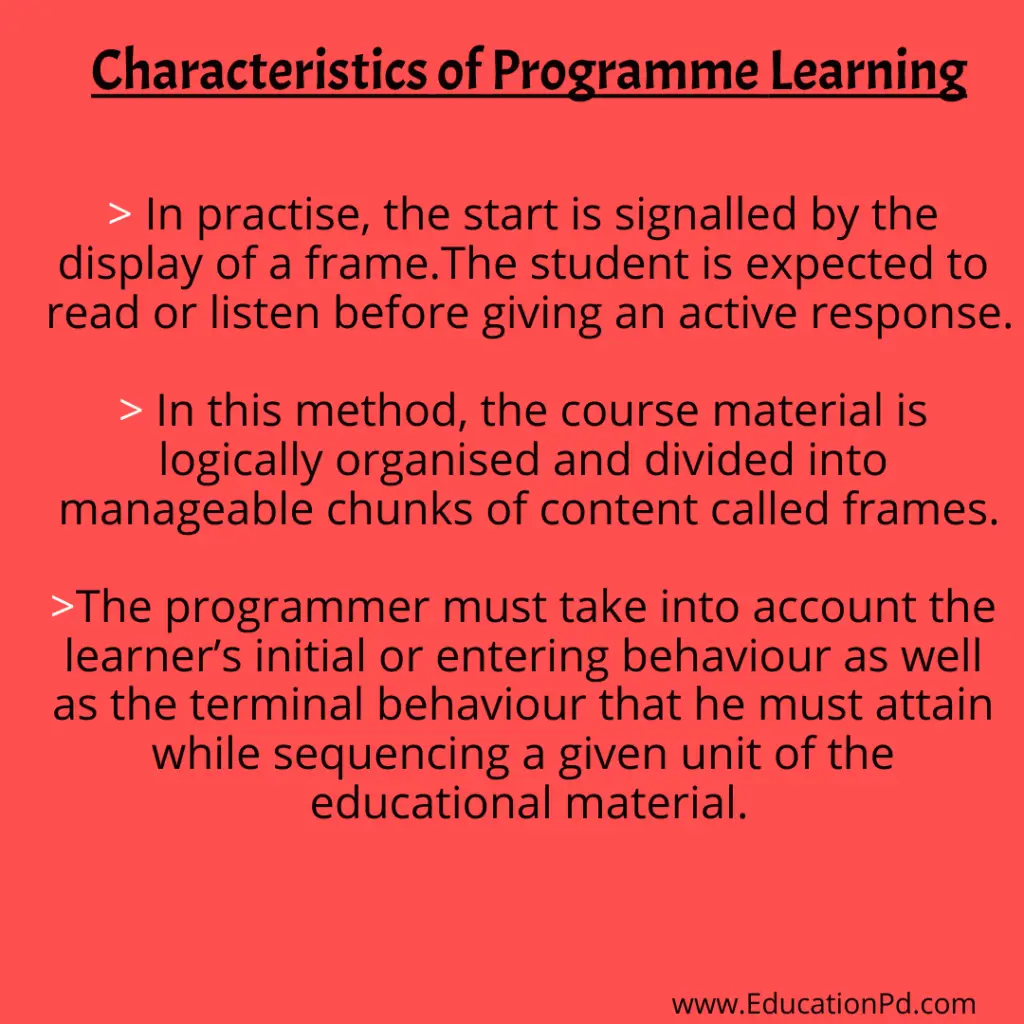Back to: Educational Technology in Education B.ed Notes, M.A Notes, IGNOU Notes
Programmed Learning and Characteristics of Programmed Learning
The principles of operant conditioning and schedules of reinforcement are used in the methodically planned, empirically proven, and successfully controlled self-instructional technique known as programmed learning to give the learner individualised instruction through logically sequenced, brief sections of the subject matter.
Generally speaking, programmed learning or programmed instruction refers to education delivered by a teaching device or computer-generated textbook.
- According to Smith and Moore, “Programmed Learning is the process of arranging, the material to be learned into a series of sequential steps. Usually it moves the student from a familiar background into a complex and new set of concepts, principles and understanding.”
- According to Espitch and Williams, “Programmed instruction is a planned sequence of experiences, leading to proficiency in terms of stimulus response relationships that have proved to be effective.”
- According to Susan Markle, “It is a method of designing a reproducible sequence of instructional events to produce a measurable and consistent effect on the behaviour of each and every acceptable student.”

Characteristics of Programme Learning
- In practise, the start is signalled by the display of a frame (a small but meaningful segment of the subject matter). The student is expected to read or listen before giving an active response.
- A method or approach known as “programmed learning” is used to deliver or receive personalised training from a number of sources, including computers, teaching aids, and programmed text books, with or without the assistance of a teacher.
- In this method, the course material is logically organised and divided into manageable chunks of content called frames.
- The programmer must take into account the learner’s initial or entering behaviour as well as the terminal behaviour that he must attain while sequencing a given unit of the educational material.
- It includes a provision for ongoing review, which might aid in raising student achievement and the standard of programmed learning.
- The focus of programmed education is on the interaction between the learner and the course content. The pupil is therefore actively driven to study and participate.
- Programmed learning demonstrates self-pacing, thus learning may proceed at a different rate based on the learner’s personality, the learning environment, and the course material.
- It requires the learner’s outward behaviours, which are easily observed, quantified, and successfully managed.
- An suitable provision for instant feedback that is based on the principle of reinforcement is included in programmed instruction systems.
